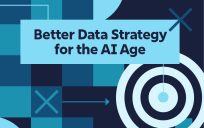Artificial intelligence (AI) has generated a lot of buzz for its potential to improve efficiency, responsiveness, and accuracy in government operations. But more than buzz, AI is already delivering tangible results for government teams and the citizens they serve. Understanding where AI succeeds in government today is critical for guiding future implementation and impact.

Streamline Operations
Perhaps the most touted benefit of AI is its ability to complete manual, computation-heavy tasks much more quickly than humans can. The Food and Drug Administration (FDA) is broadly deploying generative AI capabilities to aid in scientific reviews. AI software has been developed and piloted to handle the more tedious, repetitive aspects of the FDA’s scientific review. This frees up scientists and experts to focus on critical components of the safety evaluation process. The rollout across all of the agency’s 11 centers starts in late June 2025 and could serve as a template for how to quickly move AI implementations from pilot projects to agencywide production.
This new implementation is an extension of previous AI success. In 2023, the agency deployed AI-powered analytics for a wide variety of data-processing needs. The FDA has also explored how AI-enabled imaging technology can be used in drug product quality assessments.
Enhance Employee and Citizen Experience
The Social Security Administration (SSA), State Department, and the General Services Administration have developed chatbots that help streamline the response process for employees interacting with citizens. The SSA’s new chatbot is designed to help research and summarize topics for easier communication. Before engaging with the chatbot, SSA employees have to watch a four-minute video with guidelines and best practices for using it, emphasizing the importance of education around AI’s capabilities and use.
Beyond the chatbot, the SSA is also looking at how AI can help with determining benefit eligibility. For example, today’s disability determination process often requires applicants to file multiple appeals before receiving benefits — nearly half of initially denied claims ultimately are approved. By using AI to organize evidence and flag cases likely to be approved, the process could move more quickly, reducing the burden on both applicants and SSA staff.
Watch for Hidden Costs
This improvement in productivity and user experience, however, can come with a hefty price tag, as the Army found out. It employed an AI model that was able to reclassify 300,000 personnel descriptions (which include defining and aligning job duties, experience, and backgrounds) in one week. The task would have taken a human about 10 minutes to review a single description, meaning reviewing 300,000 would take 5.7 years of working around the clock.
While there were huge man-hours and cost savings realized, the amount of computing power needed to complete the massive job resulted in an unexpected spike in their cloud computing costs. The increased use of AI across the Army has caused a rise in cloud costs in multiple programs, leading the Army to look at ways to simplify its cloud contracting by consolidating services performed by the same provider on the same contract.
Thoughtful AI Deployment
AI on its own will not solve government challenges of efficiency and efficacy. That requires an educated workforce using AI and a procurement process built to support it. As AI continues to evolve, those who understand its potential and pitfalls will be best positioned to lead the charge toward improved government services.
As the founder of GovEvents and GovWhitePapers, Kerry is on a mission to help businesses interact with, evolve, and serve the government. With 25+ years of experience in the information technology and government industries, Kerry drives the overall strategy and oversees operations for both companies. She has also served in executive marketing roles at a number of government IT providers.





Leave a Reply
You must be logged in to post a comment.